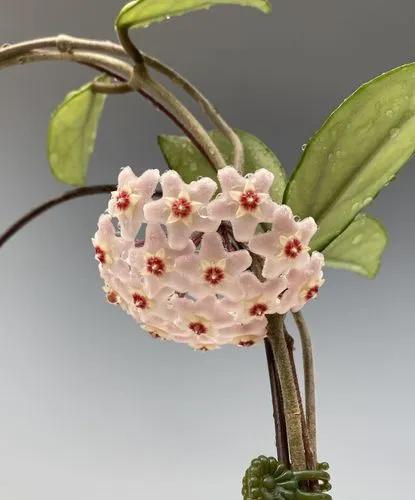Queen of Thorns is a species of flowering plant from the Euphorbiaceae family. This plant is native to the desert regions of Mexico and Madagascar. In Europe, it was first introduced in France in 1821 and quickly gained popularity as a beautiful houseplant.
Queen of Thorns Care
Euphorbia milii



In the wild, Queen of Thorns can reach a height of 6.5 feet (2 m). It will grow up to 3 feet (1 m) tall if it is indoors. The sprouts are covered with thorns, hence the name. Legends say that the crown of thorns worn by Jesus Christ at his crucifixion was made from stems of this plant.
The true flowers are small and greenish, but bright red, orange, pink, yellow or write bracts surround them. After the flowering period, which sometimes lasts all year, the fruit appears. It has a form of a seed container with 3 grains.
How to Care for the Plant

Water

Like most succulents, the Queen of Thorns doesn't need a lot of water. Always check the soil before pouring your green pet a drink. The top inch (2.5 cm) should be dry. Water thoroughly, and let the excess liquid flow from the drainage holes. Remember to empty the saucer.

Pruning

You can prune your Queen of Thorns to encourage new growth and prevent it from getting too leggy. We recommend working in protective gear, as the sap of this plant is toxic and might irritate your skin.

Fertilizer

Feed your Queen of Thorns with a balanced general houseplant fertilizer during the growing season. Dilute your liquid fertilizer to half-strength to avoid burning the plant.

Sunlight

The plant is photophilous, so the southern or eastern window sill will be the best place for a flower pot. Don't forget to provide partial shade during the scorching summer hear, as direct afternoon sunrays can scorch the leaves. In winter, you can move your Queen of Thorns to the west-facing window.

Soil

Euphorbia milii is not very picky about its soil. However, the shrub will do best in a loose succulent substrate. You can also adjust your potting mix to create the best growing conditions by adding river sand and lowland peat. Acidity should be neutral. You can also add some pebbles at the bottom of the pot to improve drainage.

Propagation

The easiest way to propagate Euphorbia milii is by stem cuttings. Take a small cutting and dip it in warm water for a few minutes. Then lay it out to dry and callus. You can also try propagating by seed, but it might take much longer.

Temperature

In general, this plant is comfortable in 73-86˚F (23-30˚C), but can handle temperatures as low as 54˚F (12˚C). It's best to provide colder temperatures during winter so that the flowers can rest before a new vegetation stage. Protect your plant from drafts and heaters.

Container

Due to a shallow root system, the Queen of Thorns needs a shallow, wide pot with drainage holes. Pick a container no bigger than 1-2 inches (2.5-5 cm) than the root ball, as excess soil will accumulate water.

Fun fact

Due to the poisonous sap, Queen of Thorns is almost unaffected by pests.

Additional

Crown of thorns will go semi-dormant in the winter and need less frequent watering and no food.

Popularity

29,566 people already have this plant 3,243 people have added this plant to their wishlists
Discover more plants with the list below
Related articles






